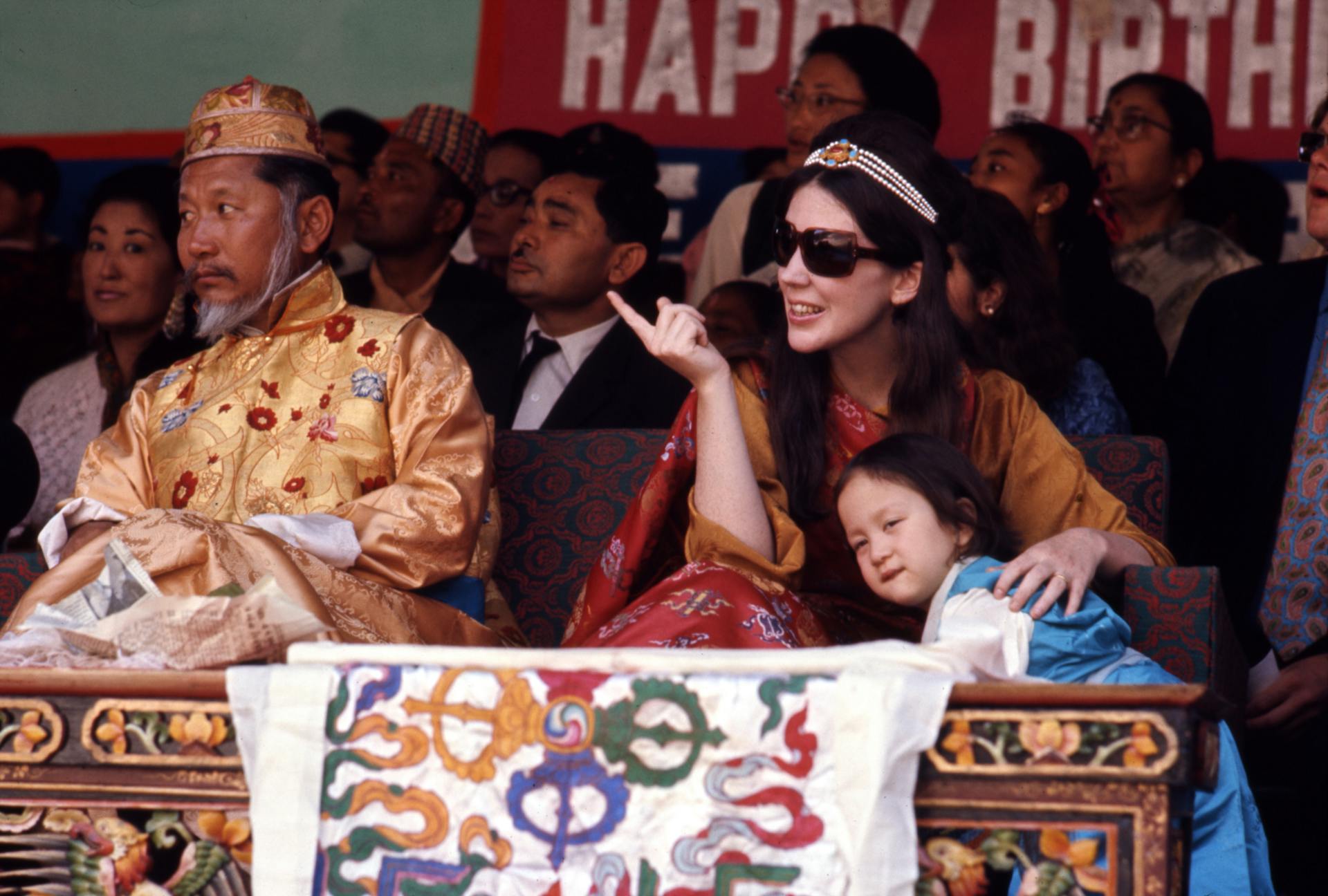I
n December 1972, Indira Gandhi, fresh from victory in the 1971 war for Bangladesh’s liberation, summoned Rameshwar Nath Kao to her office. In 1968, she had handpicked this tall Kashmiri with a formidable intellect to set up the R&AW. In three years’ time, Kao had delivered the agency’s first significant success, providing critical support for the covert training of the guerrilla army Mukti Bahini in what was then East Pakistan.
“Can you do something about Sikkim?” she asked him.
Relations between the Indian state and the kingdom had reached a stalemate. India wanted to create a treaty of Permanent Association, even dangling the carrot of sponsoring Sikkim’s membership to UN organisations in return. But over the 1960s, the Chogyal had been demanding full independence with increasing vigour.
In the Chogyal’s backyard, the demand for merger with India had originated from the first leader of the Sikkim State Congress,
Tashi Tshering, who had even gone to Delhi in 1948 to negotiate it. Patel, the man in charge of India’s integration, was keen on bringing Sikkim into the fold. Nehru chose to overrule him and sent Tshering back.
But Nehru’s India kept more than a watchful eye over Sikkim, much like the British had. “The Sikkimese kingdom became highly dependent on the political officers from the time that the British established direct control of Sikkim,” Saul Mullard, a researcher at Oxford University and author of a book of Sikkimese history, explained. “Indians took over the role of political officers in Sikkim. They inherited the authority of the British and it weakened the ability of the king to set his own agenda.”
After Indira Gandhi asked him to “do something” about Sikkim, Kao concocted a plan with PN Banerjee, the joint secretary of the R&AW’s eastern division and a fellow mastermind of the Bangladesh operation. He assured the prime minister that the R&AW could handle Sikkim’s merger.
A three-member special ops team was dispatched to Gangtok.
One of these men was GBS Sidhu, who maintained a meticulous diary of his time in Gangtok. He wrote his book at the prodding of his former boss, who had always been keen for the story of the R&AW’s role in Sikkim to be made public someday. On his passing in 2002, Kao’s own notes on the operations in Sikkim and Bangladesh were handed over to the Nehru Memorial Museum and Library. These will be made public in 2027, according to his will.
To preserve its reputation as a country that respected the sovereignty of its smaller neighbours, India was keen to legitimize its takeover of Sikkim. It made common cause with the political movement started by Tashi Tshering. India would maintain that the merger was a natural consequence of the peoples’ desire for a democratic form of government. The denouement that came with the coup took more than two years of meticulous planning on the part of the Indian state.
Like its neighbours Tibet and Bhutan, Sikkim was a conservative Buddhist theocracy. The ruling elite came from two communities: the Bhutia, who migrated from Tibet in the thirteenth century, and the Lepcha, indigenous to Sikkim. The royal family of Namgyals were Bhutia who’d come from Tibet in the sixteenth century. The demographic dynamic of Sikkim started shifting in the late nineteenth century, when Jean Claude White, the first British political officer of Sikkim, began to bring in labour from Nepal to build roads and cultivate land.
There was another reason why the British encouraged Nepali immigration—to counteract Tibetan influence in Sikkim. There were close religious, cultural and political ties between the two kingdoms. White’s successors tried to undo the policy, but by the early twentieth century, the native population of Bhutia and Lepcha people was already a minority.
From the 1940s onwards, this, then, was the defining divide in Sikkim’s politics: the tension between its powerful minority and the landless and disenfranchised Nepalis, who had grown to 75 percent of the population by the 1970s. The Chogyal’s inability to provide political representation for the majority of his subjects became his Achilles heel. The R&AW recognized this and surreptitiously worked to exploit it.
The Sikkim operation helped Kao cement his legacy and strengthen India’s position in relation to China. “It is a fantastic piece of work, handled in a way that it took place under the cover of democracy in process,” the former R&AW officer Rana Banerji, who’s studied the Sikkim papers in the archives of the R&AW’s Kolkata office, told me in a phone interview. “It showed a lot of derring-do and vision, and gave tremendous impetus to the newly-formed agency.”
Sidhu drove the operation for 26 months from February 1973 to April 1975. He was flattered to be a ‘Kaoboy’, the moniker given to the spies who were personally mentored by Kao. His book is littered with references to clandestine meetings, secured phone calls and secret memos. But Sikkim was not a regular intelligence operation. Sidhu called it a “collaborative effort” between the R&AW and the political parties. “While merger was the ultimate goal, this had to be achieved in stages and through constitutional means,” he wrote.
First, Sidhu had to reassure pro-democracy leaders that India was changing its policy towards the Chogyal—it was now inclined to support their agitation with logistical and financial assistance. On the ground, the R&AW worked to encourage popular support and escalate protests against the monarchy. All anti-Chogyal political parties were merged under the leadership of Kazi Lhendup Dorji’s Sikkim National Congress. The aim was to compel the Chogyal to seek India’s assistance in restoring law and order.
On 4 April 1973, the Chogyal's birthday, thousands of protestors gathered outside the palace in Gangtok. It was the culmination of weeks of planning. The protests turned violent and raged for days. On 6 April, when Indira Gandhi’s principal secretary PN Dhar and foreign secretary Kewal Singh met her to apprise her of the situation in Gangtok, they found that she was in the know and was waiting for the Chogyal’s request for help. Dhar guessed that she had already been briefed by the R&AW.
Two days later, India took administrative control of Sikkim. It was the beginning of the end. In May 1973, a tripartite agreement was signed between the government of India, the Chogyal and the political parties representing the people of Sikkim. Elections were held in 1974, and Kazi Lhendup Dorji became the kingdom’s first chief minister. A cable from the US Consulate in Delhi noted, “Prospects for the long-term survival of the Royal House do not look good.”
However, at the beginning of 1975, the Chogyal remained to be toppled—and in him, Gandhi unexpectedly had a worthy opponent.

